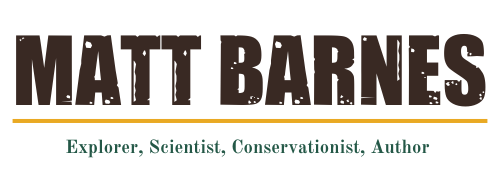The Headwaters Conference
2011/9/24 | Colorado: Gunnison Co.
The Headwaters Conference
Envisioning becoming native in a time of global change
By Matt Barnes
The Headwaters Project
I value work that sustains life, promotes diversity and harmony, and provides a rich variety of experiences. That is why I work on the land, and also why I love the stories that come from the land, and the exchange of ideas about how best to live on the land. So, last weekend I took a day off from the ranch and attended the Headwaters Conference at Western State College.
A cyclical worldview is the basis for sustainability, said keynote speaker Winona LaDuke (Anishinaabeg [Ojibwe]), founder and executive director of Honor The Earth and the White Earth Land Recovery Project, in her opening address on indigenous sustainability. She said that in her native language, as in many others, most nouns, including the one for stone, are animate: they have life, or spirit. Drawing spirit lines between tribal sovereignty, food sovereignty, and food sustainability, and between cultural and biological diversity, she reminded us that we are all related. “It is possible to have an entire worldview that has nothing to do with empire,” she said.
But the thing she said which I found most memorable was a quote from her father when she was young: “Winona, I don’t want to hear your philosophy if you can’t grow corn.” Growing corn is part of what it means to be Anishinaabeg, the northernmost corn growers in the world. More generally, it means that you have to know how to live before you tell anyone else how to live. If I want to work in the intellectual realm, I still have to live in the real world; even if I pursue an academic career, I will need to balance the ivory tower with actually getting my hands dirty. Appropriately, the academic aspect of the conference was balanced out with local field tours.
On the Food Stories tour, my favorite stop was Parker Pastures, where Bill Parker is producing grass-fed beef, grass-fed raw milk, and pasture-raised eggs, all using holistic planned grazing. Such grass-fed livestock production is the most appropriate food production model in most of the American West, as I’ve written about previously on this blog. The place we visited was irrigated land owned by the city of Gunnison, primarily for watershed management and open space. Bill Parker is producing natural food while improving the water and mineral cycles, including increasing soil organic matter—soil carbon sequestration, in other words.
Parker Pastures
Bill Parker at Parker Pastures grass-based raw-milk dairy
Pastured poultry, Parker Pastures
We also visited three thriving gardens. The first was run by the Mountain Roots Food Project, which is largely focused on involving young kids in growing food through its Roots & Shoots: Summer Camps in the Garden program. The second was perhaps the best backyard garden I’ve ever seen, at the home of Jan Scheefer. She grows most of her own food and trades for most of the rest. After eating a lunch prepared from ingredients from the Southern Rocky Mountain bioregion here in Colorado, we visited the Western State College community garden.
Compost bin, Mountain Roots Food Project
The Finding Your Story workshop with Enrique Salmón (Rarámuri [Tarahumara]), assistant professor of American Indian Studies at California State University – East Bay, engaged participants in the process of finding their own stories and communicating them in a compelling way. Enrique began by asking what if Martin Luther King had said not “I have a dream” but “I have a strategic plan.” He encouraged participants not to launch right in to data and figures and calls-to-action, but to lead with their values, share their vision, and then after engaging their audience, conclude with a call to action.
Beginning with the end in mind is one of the seven habits of highly effective people, and is also at the core of Holistic Management. After defining the whole under management, we develop a holistic goal or context, beginning with quality of life (values and vision), followed by forms of production (action) necessary to achieve that quality of life. We then describe the future resource base, including land, people, and community, required to sustain the forms of production and ultimately the quality of life, thus completing the cycle back to the vision.
Saturday night we saw two films about ranching, sustainability, and holistic management. Melinda Levin and Irene Klaver’s The New Frontier: Sustainable Ranching in the American West told the stories of Jim Howell here in Colorado, Sid Goodloe in New Mexico, and Betsy Ross in Texas. It was really gratifying to see the Howell Ranch on the big screen. It was all shot before I started managing this place for Jim, so I am not in the film, but that is just as well because Jim is the one who has been restoring this land for about a dozen years before I came along. It was also great to see Sid and Betsy, who I know from the Quivira Coalition and the Holistic Management community, getting their fifteen minutes of fame. The second film, Jack Lucido’s Sustainability in Ranching, is a work-in-progress documenting several ranchers in the Gunnison Basin (including Bill Parker), who are also using holistic planned grazing to both produce meat and restore their land. The films, and the visit to Parker Pastures, told a story that, while familiar to me, remains somewhat paradigm-challenging for many of my friends in the environmental movement. But I think a few of them may have had a realization, even a paradigm shift, thanks to the powerful stories shared at the Headwaters Conference.






